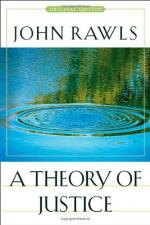|
This section contains 288 words (approx. 1 page at 400 words per page) |

|
1789: Introduction to the Principles of Morals and Legislation, by Jeremy Bentham, delineates the principle of utility, which posits that morality is determined by whatever results in the greatest good for society as a whole, regardless of the fortunes of any individual or group of individuals. This theory goes against intuitionism, a school of thought that implies that humans have an intuitive sense of right and wrong.
1971:A Theory of Justice, by John Rawls, transforms the fields of ethical and political philosphy, posing the first convincing challenge to the dominance of utilitarian thought.
Today: Ongoing critical response to Rawls, both supportive and dismissive, is a continuing measure of his influence on the field of ethics.
Mid-1800s: Legal, educational, and general social reform occurs in England as a result of corruption and dissatisfaction. A new legal system, largely based on utilitarianism, supplants a system more...
|
This section contains 288 words (approx. 1 page at 400 words per page) |

|




